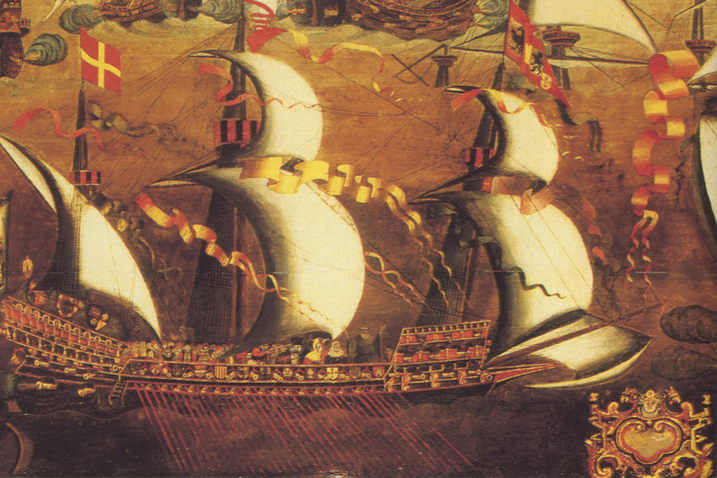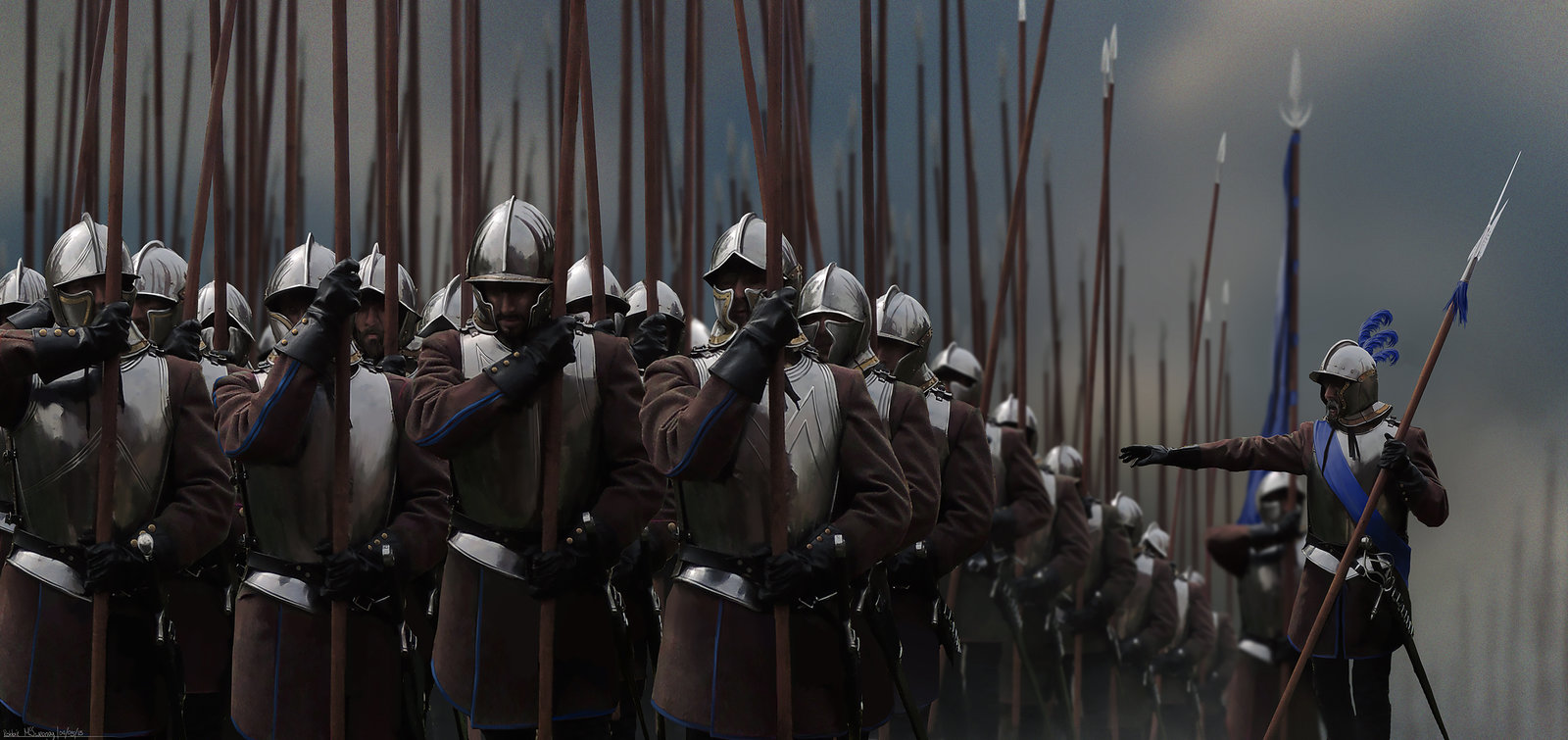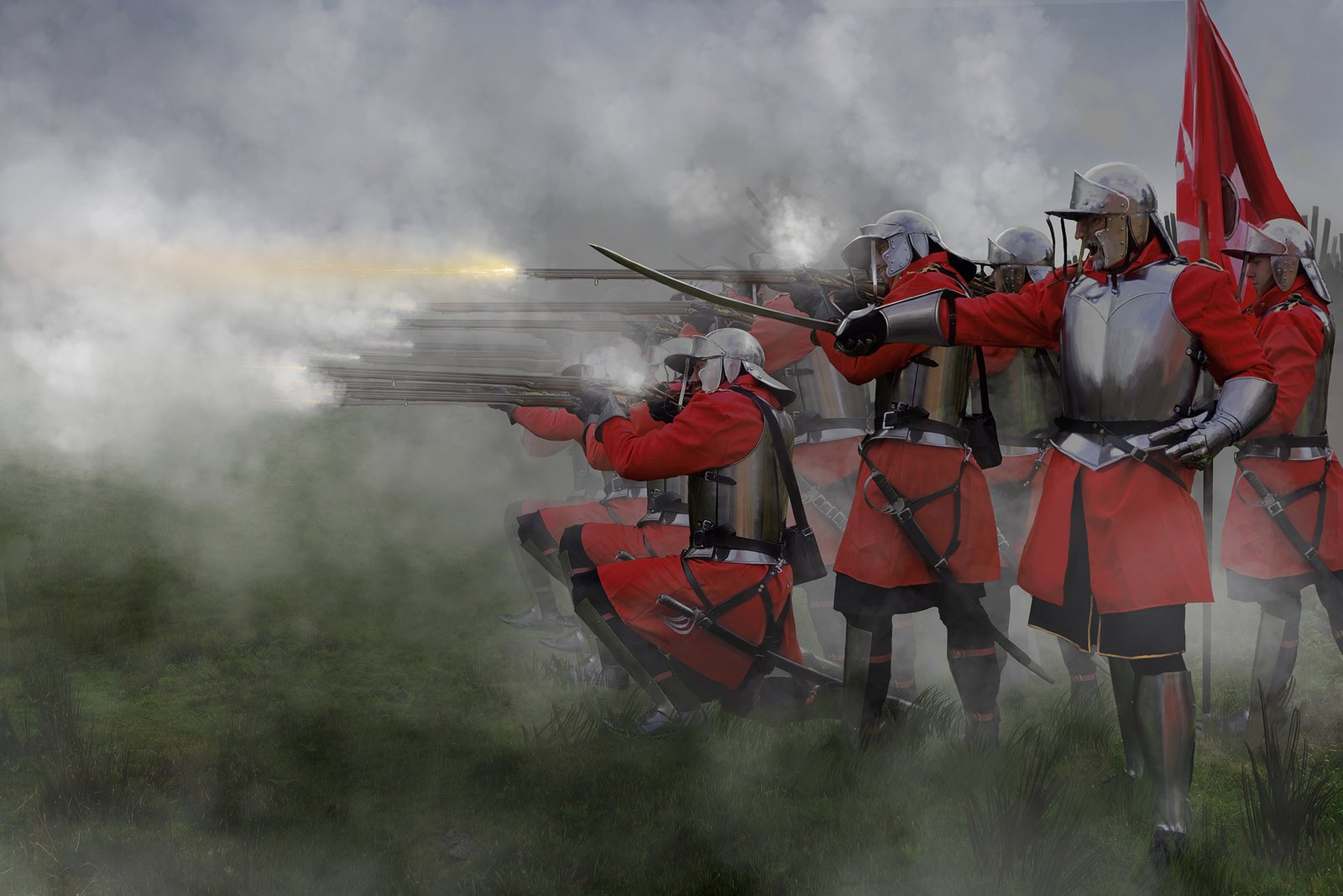Aeillan Military and Warfare
Aeillan Warfare has its roots in the ancient warfare techniques of the Yulan-Tai. As far as archaeological evidence has concluded, the Yulan-Tai themselves favored, whenever possible, maintaining a professional warrior class and using smaller units of quality troops to raid and conquer larger states. It is believed that the Yulan-Tai favored archers as their principal striking force, and generally proved heavily armored, at least in their later years. Where the Yulan-Tai failed however, was in their apotheosis. The transition to a more reptilian form hampered their ability to withstand the cold, a fact exploited during the war of frozen scales, which broke the back of their empire, and allowed the colonized humans, dwarves, and gnomes in their territory to overthrow their Empire. The Ilosi, Tyroi, and Spartharoi themselves adopted a citizen-soldiering culture with the Ilosi in particular establishing, as a unifed state, a professional army well before most of the Galisea, and the first among human societies on the continent since the Yulan-Tai. The professional troops of the Ilos managed to secure the whole of the Aeillan region and establish the Aeillan Empire over a period of roughly 500 years, and held together with a little over 700. Though not successful in completely preventing the Feloran invasions at the end of the Aeillan period, the armies of Aeilla did manage to outlast the Felorans until their overstretch and quagmire in Gallaca allowed them to eventually overturn, and throw the Felorans off of Galisea. In the later succession wars, and the centuries of intermittent warfare after the fall of the Aeillan Empire, the successor states, the capabilities of the Aeillans as a whole to conduct large scale warfare was drastically reduced as the smaller successor states were more limited in their capacity to maintain the larger armies. In individual battles, there has been a shift slowly towards less and cheaper armor (at least among less centralized states), and with a growing use of missile weapons, with these changes coming more rapidly with the advent of gunpowder weaponry. Results however, vary depending on which successor state is managing the armies in question.
Tactics
Aeillan armies are well known for organization, as even the lowliest units in the Aeillan region tend to be better organized than those of Gallacans, Hadar, and particularly of Elleryc people and Aaraumites. For most of the larger Aeillan successors, there exists a fairly extensive logistical structures that allow them to maintain fairly sizable forces in the field for extended campaigns. Smaller states are less capable of this feat, though, at least within their own borders, they can manage to keep their armies organized, and chains of command at least reasonably intact. In combat, the Aeillans tend to favor relatively light, or medium armoring for their infantry with heavy armor generally deemed too expensive for the largely nationalized military forces of their successor states. On the battlefield, most troops form pike and shot blocks using the pikes to protect from cavalry and the muskets or arquebuses as the primary striking arm, though in pike heavy formations, this is displaced by the push of pike that occurs between blocks of pike. Infantry are generally supposed to act as the anchoring formation upon which the rest of the army can arrange itself, and artillery in particular meant to act in a supporting role. Cavalry tactics conversely have a greater divide between light and heavy cavalry. Light cavalry sees little use on the modern battlefield, being used in a supporting harassment role attacking supply chains burning villages and disrupting armies on the march. Heavy cavalry however, has a major battlefield role, with two main types, the pistoliers who ride around pike formations, discharging pistol fire into them before charging home with sabers, and heavy lancers who directly break up and through enemy formations, though with the rise of pike they tend to attack the flanks and rear formations rather than historic shock charges straight through the front. Some Aeillan forces have supporting forces, most often these are artillery who serve to break down fortifications, or disrupt infantry formations, but do not stand up in a heated battle. There are also the Hetairoi, elite specialists. These Hetairoi serve unique roles, most often related to the breakup or harassment of pike formations. Evokatoi are shock troops, using heavy armor and blunderbusses to shatter the front ranks in a push of pike, Aerial cavalry attack from the skies using the third dimension to disorient the infantry and pick off vulnerable targets from the air. The Antesignani serve as elite scouts and trackers, and in the heat of battle can be seen as battlefield assassins eliminating high value targets in enemy armies. Rarest of all are war priests and war mages, of which most successors can scarcely claim to have more than a small handful. Their magic provides invaluable battlefield support such that one or two can turn the tide of battle singlehandedly.Aeillan Military Terminology
Organizations
Penandroi (Main Article: Penandroi) - Penandroi represent the core of traditional, and most modern Aeillan armies, these professional troops can be relied upon to conduct long term offensive campaign, and receive good training, and access to mostly modern equipment. In almost all Aeillan states, the ranks of the Penandroi are exclusively open to humans, though some also include Half-Elven members in their armies. Their maintenance is expensive, and so few successor states can maintain large standing armies of Penandroi.Stat Blocks: (Inidividual) Penandroi Footman, Penandroi Cavalryman, Veteran Officer. (Unit) Skutatoi, Loútsosí, Mouskétes, Toxotae, Legeres, Cataphractarii, Pistolí
Akritae (Main Article: Akritae) - Akritae in Aeillan societies are generally a semiprofessional class of farmer-soldiers who handle border protection, rural law enforcement, putting down rebellions, and occasionally short term offensive campaigns, most commonly raiding. Equipment and training is typically of lower quality, and oftentimes, soldiers in the Akritae must provide their own equipment. This however, means that they are less expensive for the state to maintain, and therefore their use and role has steadily expanded as the more valuable Penandroi became more specialized.
Stat Blocks: (Individual) Akritae, Akritae Leader. (Unit) Standard, Penakritae, Chorakriate, Cavalry
Hetairoi (Main Article: Hetairoi) - Elite, and highly specialized soldiers in the Aeillan military, these troops are given the best training and equipment available to their host state. They are rarely seen however, as only the most powerful successor states maintain more than a handful due to the prodigious expense of maintaining them, though some like the Evokatoi and Antesignani are seen somewhat more often, requiring less expense than Aerial cavalry or mages.
Stat Blocks: Antesignani, Evokatoi, Aerial Cavalry,War Mage, War Priest
Stratalogi - A broad term covering the militias or levied troops of states without a professional standing army the Stratalogi are a highly diverse lot. Some are very poor quality and hardly capable of fighting peasants, nevermind a professional army. Others however, are better, being equivalent to Akritae or even full Penandroi. Most important to all Stratalogi however, is that they are only called into service temporarily meaning logistical trains for them are usually token at best, making them poorly suited to offensive campaigins.
Stat Blocks: (Individual) Rural Levy, Urban Militia,Stratelogi Officer, Levied Mage, Levied Priest (Units) Levied Infantry Platoon, Levied Archer Platoon, Urban Polearm Platoon, Urban Crossbow Platoon, Urban Sword Militia, Urban Arquebus Militia
(In certain circumstances stats for Akritae and Penandroi are also acceptable)
Ranks and Formations
| Rank | Unit | Unit Composition and Function |
|---|---|---|
| Pentarch/es/ | Fagetoi | A mess group, 5 soldiers. Only cavalry on the battlefield. |
| Dekarchos/oi/ | Kontarcon | Equivalent to a squad, 10 soldiers, smallest tactical unit used universally. |
| Ypoploíarchos/oi/ | Bikontarcon | Equivalent to a small platoon, 20-25 soldiers, except officers small tactical unit. |
| Poploíarchos | Penkontarcon | Equivalent to a platoon 50 soldiers, except officers, tactical unit, smallest reasonably capable of producing a pike and shot block. |
| Komes | Bandon | Equivalent to a company, 100-200 soldiers, except officers (strictly 200 if Penandroi), largest unit regularly used by Akritae until reaching the totality of an army. |
| YDrouganos/oi/ | Demitagma | 6 Bandae of similar troops banded together. Largest strictly tactical formation in common Aeillan use. |
| Drouganos/oi/ | Tagma | A Demitagma along with roughly 1,200 support troops (including artillery, smiths, wagon trains, and dedicated foragers), a largely self contained unit on campaign. |
| Tourmarch/es/, Tourmabasil/ae | Tourma | 3-5 Tagmae organized together for the purposes of managing a large campaign. |
| Mikróbasil/ae/ | Sóma | 3-5 Tourmae organized together for the purposes of managing an extremely large campaign. Almost never seen since the fall of the Aeillan Empire. |
| Strategos/oi/ | The sum total of a nation's military force, whatever that may be. Still generally subservient to the head of state |
Armor
Clibinarius - A full suit of metal or lamellar plate armor, this armor is a relatively recent invention, is expensive and is thus quite rare. It is heaviest armor available in Aeilla.Demiclibinarius or Half Clibinarius - A suit of metal or lamellar plate armor that does not cover the whole of the body with generally the lower legs, hands and feet, and occasionally the upper legs uncovered by metal. More common than a full mantle of Clibinarius.
Kavadion - Kavadion is the lightest common armor used by the Aeillans on a regular basis, generally a coat of textile armor covering the torso and arms, equivalent to a gambeson. Some are heavier, thus offering better protection.
Klivanion - Heavy Lamellar armor, generally the heaviest available to the Akritae. Has slowly fallen out of favor with the Penandroi.
Thórakas - A simple metal breastplate sometimes with greaves, gauntlets, or bracers as supplementary armor pieces, worn over textile armor.
Naval Warfare

Armada Galleass by Unknown (Spanish government)




